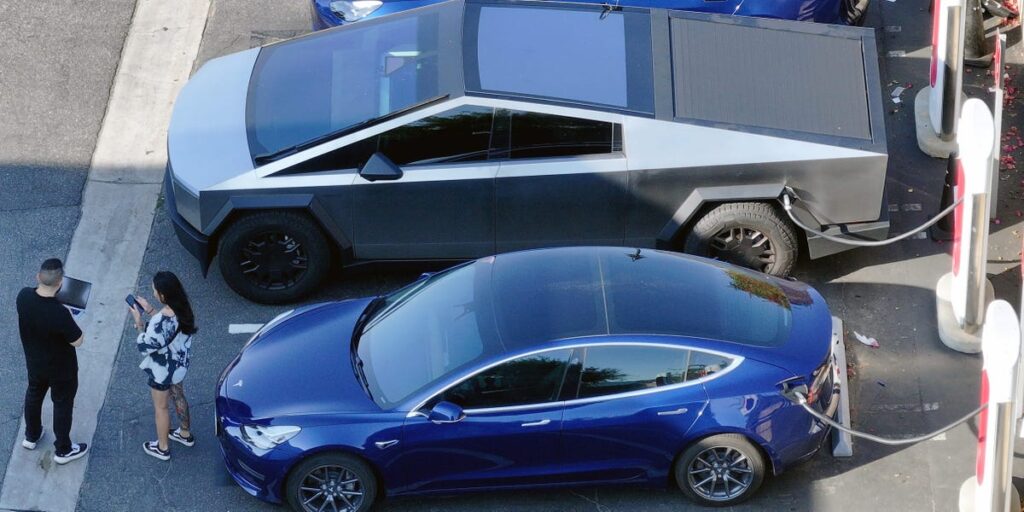While you spent the summer vacationing and traveling, many electric vehicles sat idle on dealer lots. At the end of July, it took dealers an average of 81 days — nearly three months — to sell the EVs that arrived in their showrooms, according to days-to-turn data from Edmunds.
That’s up 75% from the same month a year ago, and a much longer stay on dealer lots compared to the industry average of 57 days before being sold.
In addition to the slow turn rate for EVs, there are also a lot more of these cars piling up than gas-powered cars. Dealers at the end of July had enough battery-powered vehicles to last dealers about 100 days, compared to a 68-day supply of all other powertrains, according to day-supply data from Cox Automotive.
The glut of EVs on dealer lots means customers have a better breadth of options than ever, and they also have more negotiating power as dealers grow more desperate to move metal off their lots.
Automakers are also offering more leasing deals, as well as other discounts and incentives. This has helped cut the average price paid in July for a new EV to $58,619, which is 1% lower year-over-year, according to Edmunds.
That’s actually $4,366 cheaper than the average price paid in July for a new plug-in hybrid. Demand for hybrids is growing among a more practical group of green car shoppers who aren’t ready to make the switch to a fully electric car.
While electric vehicle sales overall are still on the rise, the growth rate has slowed considerably, and automakers are still adjusting their production cadences to this change in demand.
Affordability has taken on new importance in the EV segment as wealthy early adopters are replaced with more frugal shoppers. The average price paid for an EV still outpaces the average price paid for any new car by about $10,000.
That’s leading to more creative solutions from both dealers and car companies. Here’s what you need to know if you’re looking for a deal on an EV this fall.
Leasing is the best affordability hack
Jessica Caldwell, Edmunds’ chief director of Insights, said leasing is the best option for affordability right now if you’re shopping for an EV based on monthly payments rather than the sticker price.
New restrictions have made it harder to qualify for the $7,500 federal tax credit for EVs. The list of eligible vehicles has dwindled to about 13, and new income restrictions disqualify some buyers.
But a loophole in leasing can help. Leased EVs are not held to the same pricing or parts-sourcing restrictions, and caps on buyer income are also not applied to leases since there is technically no purchase.
Car companies are leaning into this loophole with attractive EV leasing deals.
Take Hyundai, for example: it’s offering the Ioniq 5 — which starts at $41,800 — for $187 a month for 33 months, with about $4,000 due at signing.
According to Edmunds’ monthly payment calculator, a car loan for that same sticker price and down payment, with the 7% average interest rate, would cost about $800 a month for 60 months.
Dealers and automakers are heavily relying on smaller down payments and more manageable monthly payments to incentivize their electric models.
It’s working, Caldwell said, with leases accounting for almost 70% of all new EV sales.
“For shoppers right now it’s a lot less about the price of a vehicle as opposed to how much is the monthly payment — especially when you apply the federal tax credit,” Caldwell said.
Read the full article here
















